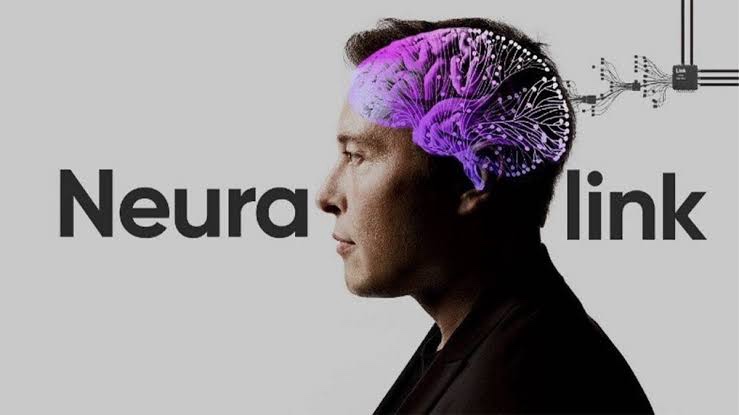
Introduction:
In the ever evolving landscape of technological innovation few endeavors capture the imagination and then spark as much debate as a Neuralink. Founded in 2016 by Elon Musk and a team of visionary scientistswithengineers. Neuralink stands at the front of neurotechnology, striving to create high bandwidth brain computer interfaces with the ambitious goal of revolutionizing healthcare and ultimately augmenting human capabilities. This article delves into the intricacies of a Neuralink technology. It progress its aspirations and then profound implications it holds for the future of a humanity. From its foundational principles to its recent groundbreaking of human trials. We will explore the multifaceted dimensions of this pioneering company and its quest to seamlessly to integrate the biological and the digital realms in future.
Read also: Navigating the Metaverse: Opportunities for Businesses and Creators
1. The Foundational Technology: Unveiling the N1 Implant
At the heart of Neuralink innovation it lies in flagship device the N1 Implant also known as “the Link”. This sophisticated piece of technology is roughly the size of a coin and represents a significant leap forward in BCI design. it Unlike earlier and more invasive BCI systems of the Link is designed for long term implantation with minimal risk. Furthermore the implant possesses the capability to stimulate specific areas of the brain using the electrical currents opening doors of potential therapeutic interventions. The Link is powered wirelessly and communicates with an external devices allowing for real time data transfer and to control. The development of this compact yet powerful implant is a testament to advancements in materials science of micro fabrication and neuroengineering.
2. The Precision of Neurosurgery: The Role of the Surgical Robot
The successful implantation of the Link is necessitates an unprecedented level of surgical precision. To overcome the inherent of challenges in manually inserting thousands of delicate threads into the major brain system without causing damage. Neuralink has developed a state of the art neurosurgical robot. This highly sophisticated robotic system will utilizes advanced imaging and a computer vision to map the intricate structures of the brain. Guided by detailed surgical plans the robot is meticulously inserts each thread to the desired depth and a location with micron level accuracy is important. This automated approach significantly reduces the invasiveness of a procedure and enhances the safety and the efficacy of the implant process. The development of this specialized surgical robot is a critical in component of Neuralink strategy to make BCI technology more accessible and reliable in future.
3. Initial Focus: Restoring Lost Functionality and Treating Neurological Disorders
Neuralink’s immediate objectives are deeply rooted in addressing critical medical needs. The company has a primary focus is on developing applications and that can significantly improve the lives of individuals suffering from the severe physical limitations and neurological disorders. One of the most promising applications is restoring motor function in a paralyzed individuals enabling them to control computers and smartphones also potentially prosthetic limbs or wheelchairs using their thoughts. This could revolutionize the lives of those with spinal cord injuries or than other conditions that impair movement. Neuralink is exploring the potential of the technology to treat a neurological conditions in such as a Parkinson disease and a epilepsy also depression by delivering targeted in electrical stimulation to specific brain regions.
4. Breakthrough Human Trials: Early Successes and Future Directions
The year 2024 marked a milestone for Neuralink with the successful implantation of its device in its first human patient in real, Noland Arbaugh who had quadriplegia. The results of this initial trial have been encouraging with Arbaugh demonstrating the ability to control the computer cursor and even play video games using his thoughts alone. The achievement validated the potential of Neuralink’s technology to restore the degree of independence to an individuals with paralysis. Following this initial success in Neuralink has continued its clinical trials under the PRIME Study. Three individuals having received implants as of January 2025. The company aims to enroll more and more participants to further evaluate the safety and the efficacy of the device across a broader range of applications for Neuralink. These ongoing trials are crucial for gathering data and refining the technology also ultimately seeking regulatory approval for widespread in medical use.
5. The “Blindsight” Project: Aiming to Restore Vision
Beyond addressing motor and a neurologicalimpairments. Neuralink has set its sights on a tackling sensory deficits. The Blindsight project will represents a bold endeavor to restore vision to individuals who are blind. This initiative is involves implanting micro electrode arrays in to the visual cortex and the part of the brain responsible for processing visual information. The goal is to stimulate these areas in a way that allows the brain to perceive the patterns and a potentially reconstruct to form an artificial vision. While still in the early stages of development. The Blindsight project holds immense potential to transform the lives of millions affected by blindness. Neuralinkanticipates the first human implant for the Blindsight project by an end of 2025. Marking another significant step in their ambitious roadmap to future.
6. High-Bandwidth Interface: Enabling Complex Communication
A key differentiator of Neuralink technology has emphasis on creating a high bandwidth interface between the brain and external devices. The sheer number of an electrodes in the Link to coupled with sophisticated data processing algorithms to allows for the recording and transmission of a vast and large amount of neural information. This high data will throughput itscrucial for enabling complex communication and to control. For instance the ability to decode intricate of neural patterns associated with speech could allow non verbal individuals to communicate more in naturally and expressively than current assistive to technologies permit. Similarly the high bandwidth control signals could enable more and nuanced to intuitive control of prosthetic limbs or robotic assistants. This focus on maximizing the information flow between the brain and the machine is central to realizing the full potential of an BCI technology.
7. Biocompatibility and Long-Term Reliability: Ensuring Safety and Efficacy
The long-term success of an implantable BCIs hinges on their biocompatibility and in reliability. Neuralink has placed significant emphasis on a developing materials and to designs that minimize the bodys immune response and ensure the longevity of an implants functionality. The ultra thin threads are made from biocompatible polymers designed to be well tolerated by brain tissue in nature. The entire system is an engineered to be withstand the complex and a dynamic environment of the human body over the extended periods.
8. Ethical Considerations and the Future of Human Augmentation
As Neuralink pushes the boundaries of an neurotechnology it has inevitably raises profound in ethical considerations. Questions surrounding data privacy and informed consent potential misuse of the technology and also the societal implications of human augmentation are critical and to require careful consideration.While Neuralink initial focus is on the medical applications. The long term vision as an articulated by Elon Musk, includes the possibility of enhancing human cognitive abilities to creating a more direct interface between humans and an artificial intelligence. These aspirations spark intense debate about the very definition of what it means to be on human and the potential risks and benefits of such profound technological integration are prepared. Open and transparent discussions involving scientists and ethicists and policymakers also the public are crucial to navigate the complex ethical landscape that accompanies the advancement in BCI technology.
Conclusion:
Neuralink stands as a testament to human ingenuity and the relentless pursuit of technological advancement. Its development of a high bandwidth, implantable brain computer interface holds immense promise for revolutionizing the treatment of the neurological disorders to restoring lost sensory and the motor functions and an ultimately enhancing human capabilities. The early successes in the human trials are particularly the ability of a paralyzed individual to control a computer with their thoughts in offer a glimpse into the transformative potential of this technology. However the alongside of excitement and optimism, there are significant ethical, safety, and societal considerations that must be the carefully addressed asa Neuralink and the broader field of neurotechnology continue to evolve. As we stand at the new era of brain-machine interaction, responsible innovation, rigorous scientific investigation, and thoughtful ethical deliberation will be paramount in shaping the future of this groundbreaking technology and its impact on humanity.
Buy Now
Quantum Computing for Computer Scientists
